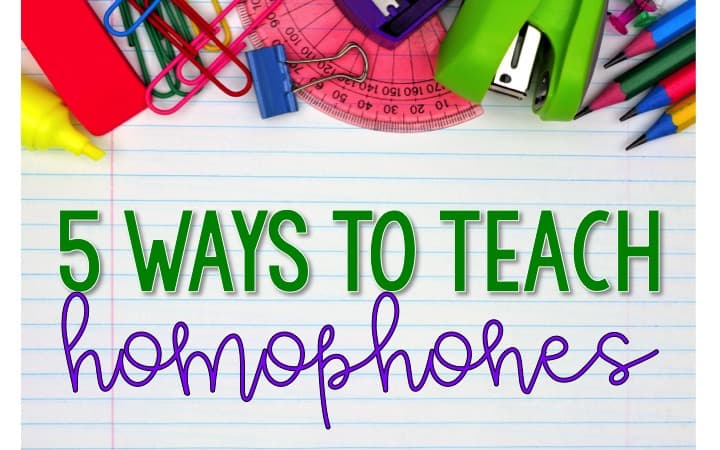Teaching prefixes, suffixes, and multiple meaning words, plus root words and base words is a full-year endeavor. It’s not something that can be done in an individual unit of instruction. Instead, there must be continuous and intentional instruction along with reinforcement throughout all reading units.
However, time is never our friend. As teachers, we know how valuable time is. We need more time to plan and develop lessons. There’s almost always a time crunch when we try to squeeze in all our lessons into the school day. Plus, there’s never enough time in the school year to properly teach all our standards.
Since time is a factor that we can’t ignore, I’ve created short, but powerful, lessons that introduce and review morphology and vocabulary content. These lessons provide a year’s worth of instruction.
Teaching Prefixes and Suffixes
Day 1-Word Matrix
A word matrix great tool for teaching prefixes and suffixes. It shows how morphemes can be combined to construct words. The prefix is on the left, a base or root word is in the center column, and the suffix is on the right. When students construct words with the matrix, the new word must contain the base word that is shown in the center of the matrix.
Each week’s word matrix consists of two root or base words. The focused prefix or suffix is included in the matrix. The additional prefixes and suffixes may be used for pre-teaching and reteaching morphemes. As you complete the matrix, the power of the activity, is in the conversations held as building words.
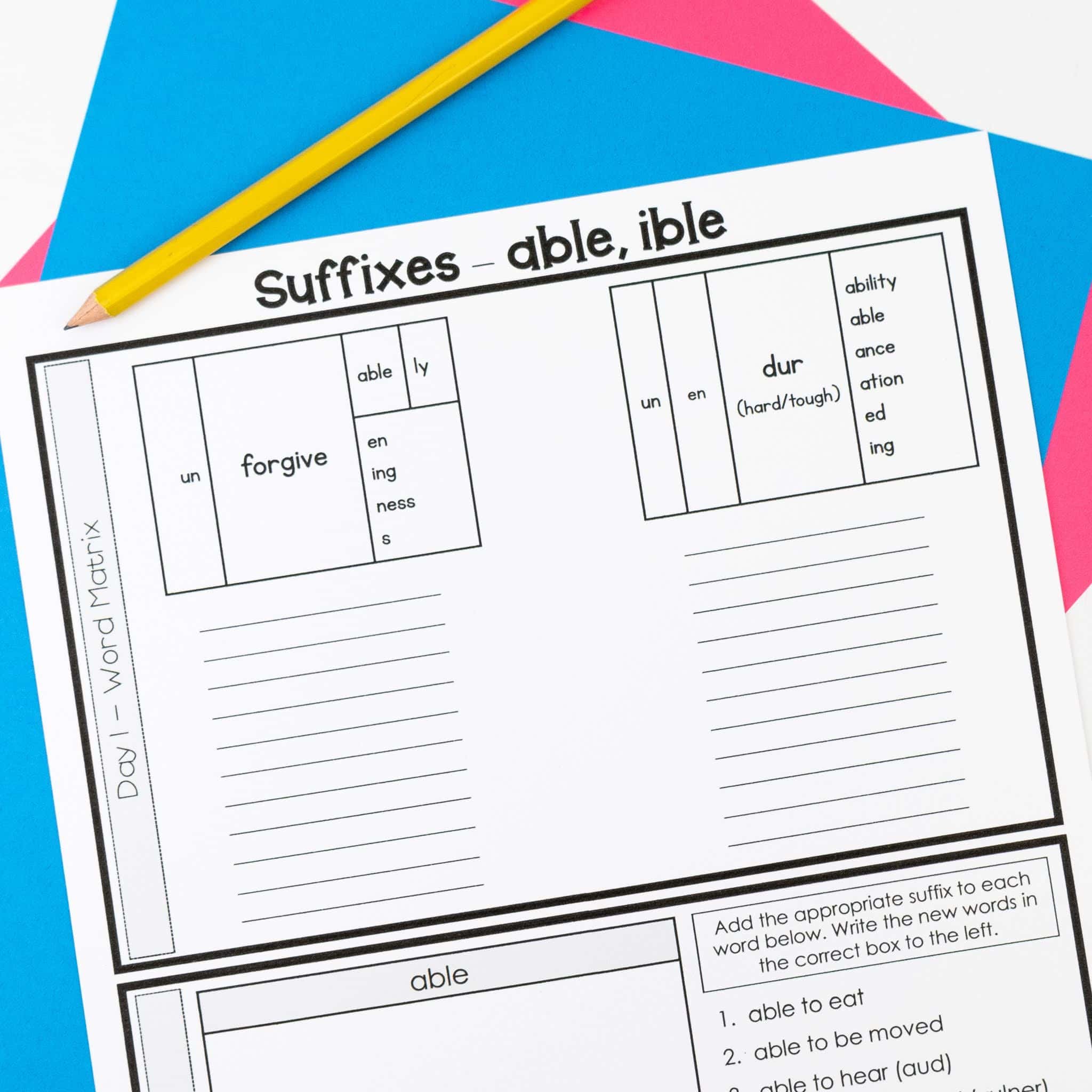
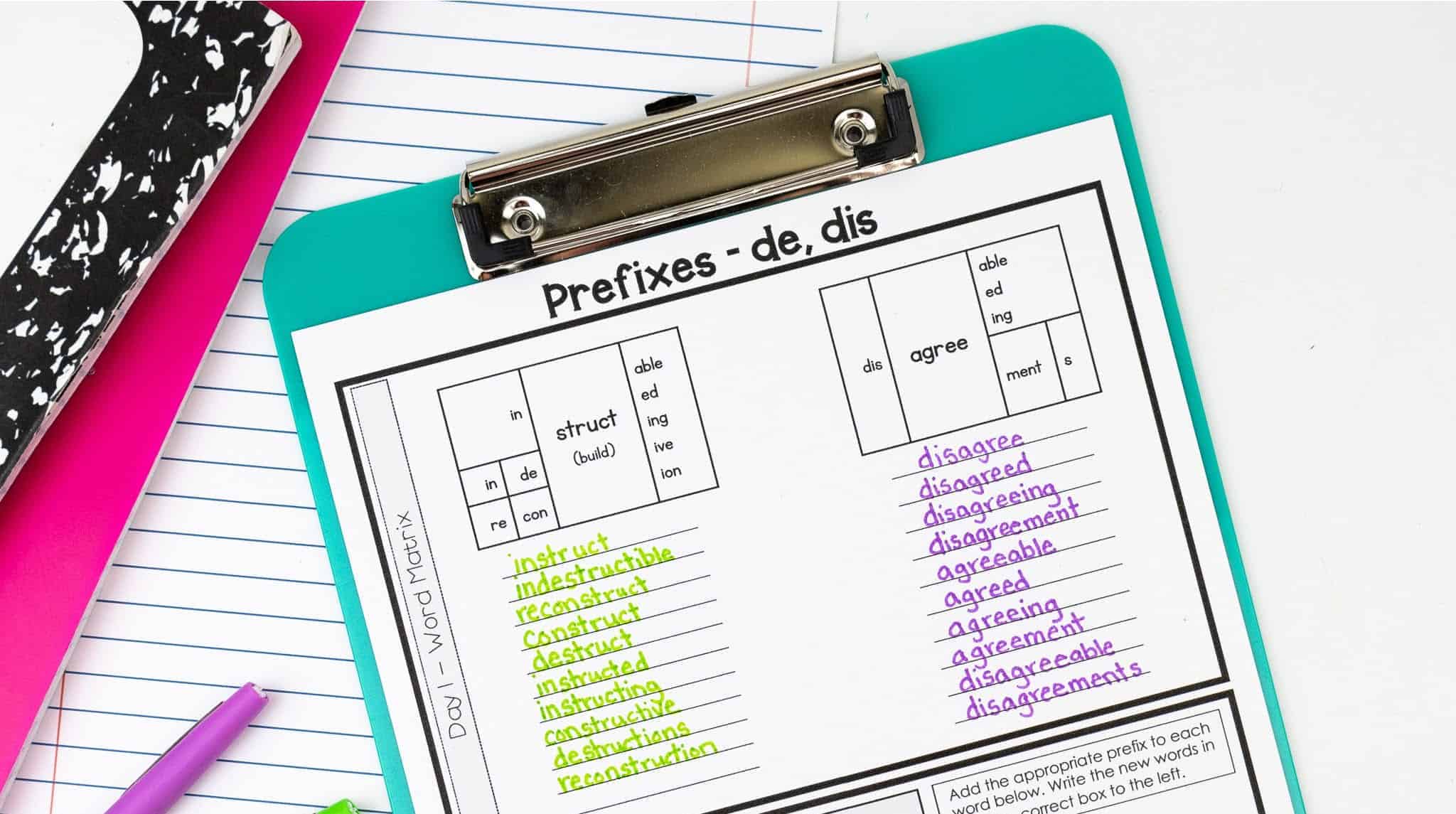
Day 2-Word Sort
On the second day of instruction, students are given 10-12 root or base words to sort by either prefix or suffix. Since the weekly prefixes and suffixes are grouped by meaning, this is a bit more challenging for students. For example, students may be given “opposite of allow” and determine whether they should use the prefix de- or dis-. This is also a great time to review spelling rules, because there are sometimes slight changes to the base or root word.
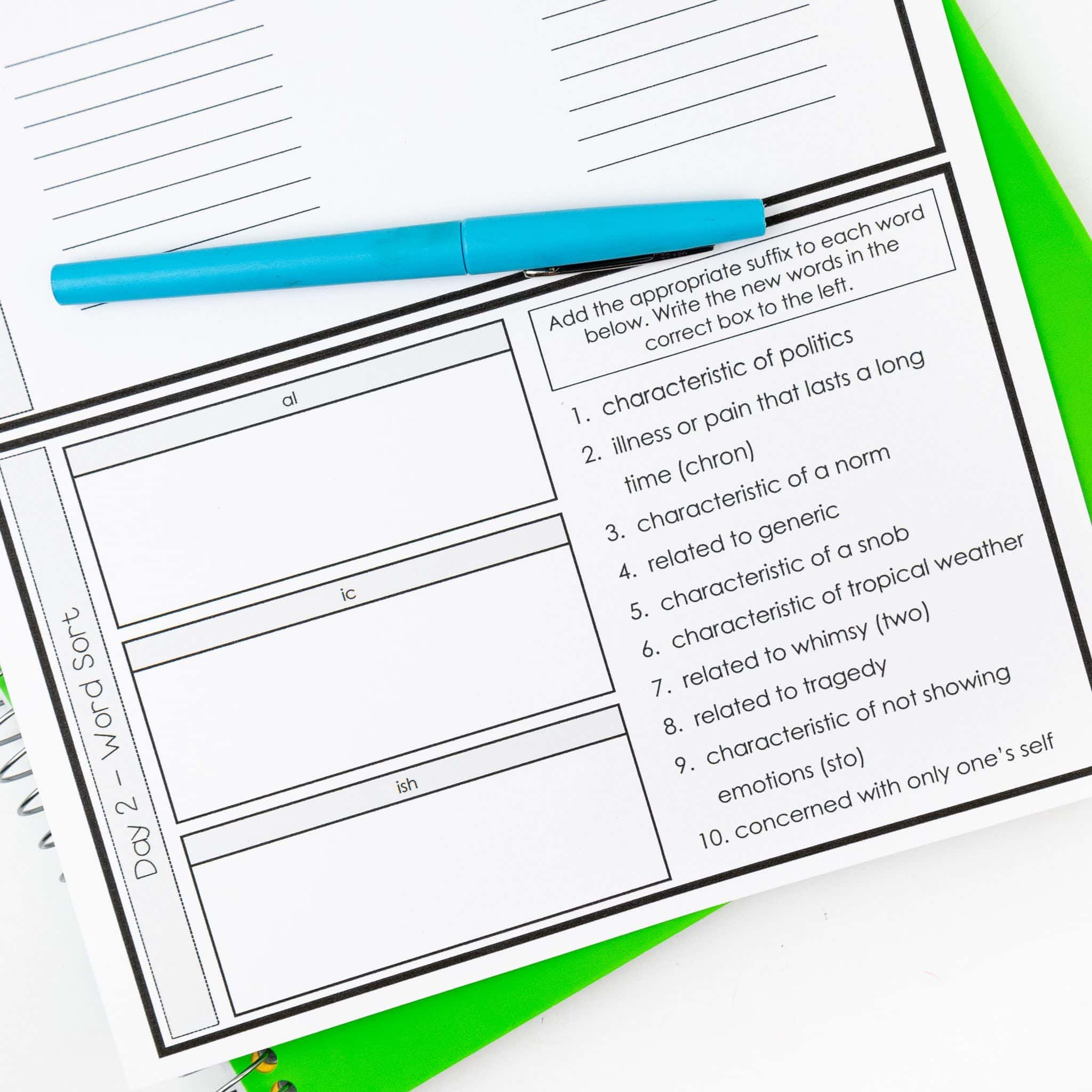
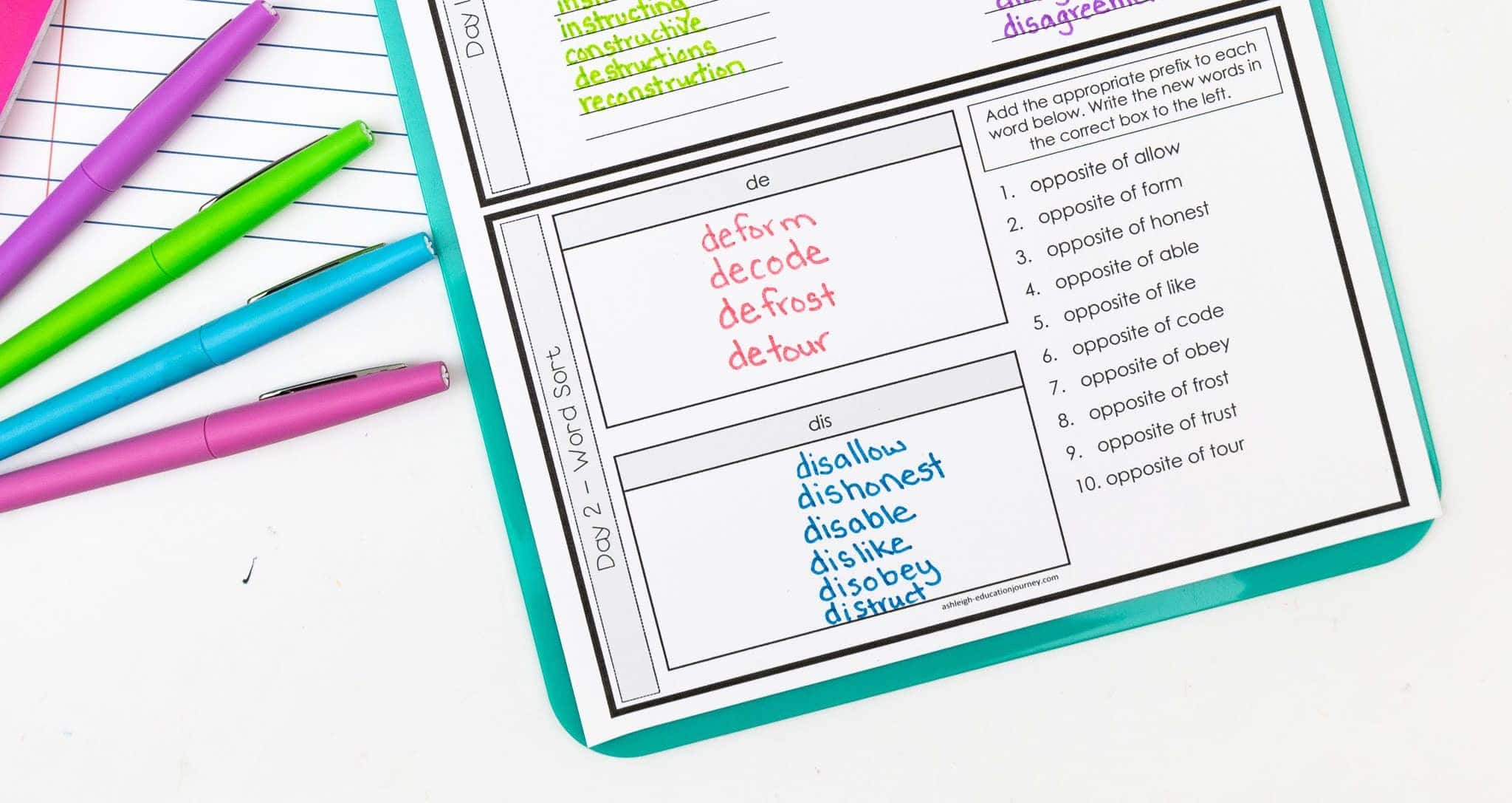
Day 3-Word Chains
Word chains are a lot of fun for teaching prefixes and suffixes. Each word chain starts with a base word and gives students a series of six steps to form new words using new bases, roots, prefixes, and suffixes. As students complete the word chain, they write a brief definition of each word they form. Once again, the power of this action is in the conversations held as students develop each word.
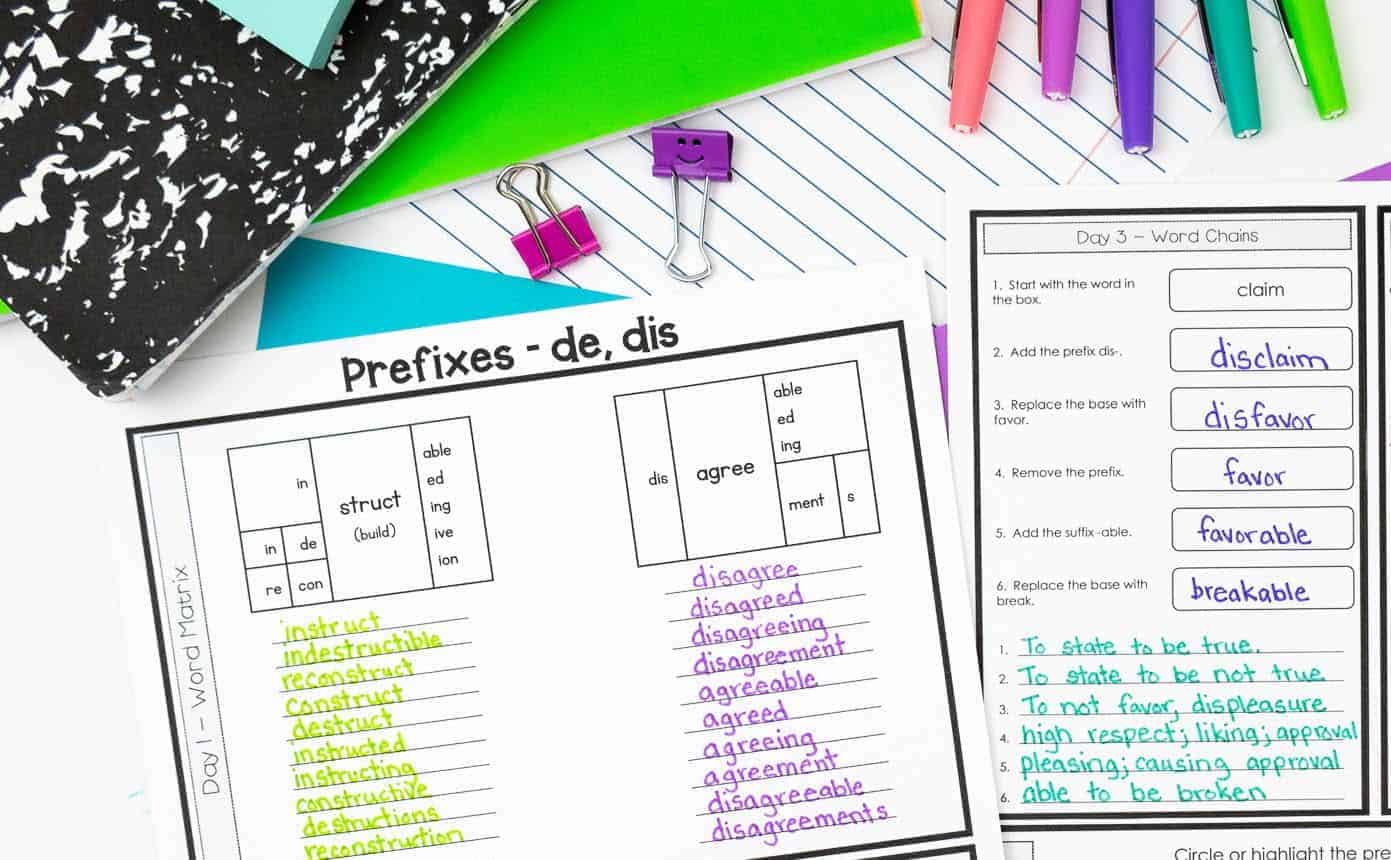
Day 4-Sentence Level Comprehension
Using the prefix or suffix of the week, students are given four thought-provoking questions that require a deep understanding of the vocabulary word. Each word is age-appropriate and are not easy enough for most elementary students to immediately recognize. Students can use the word parts to determine the meaning of each word.
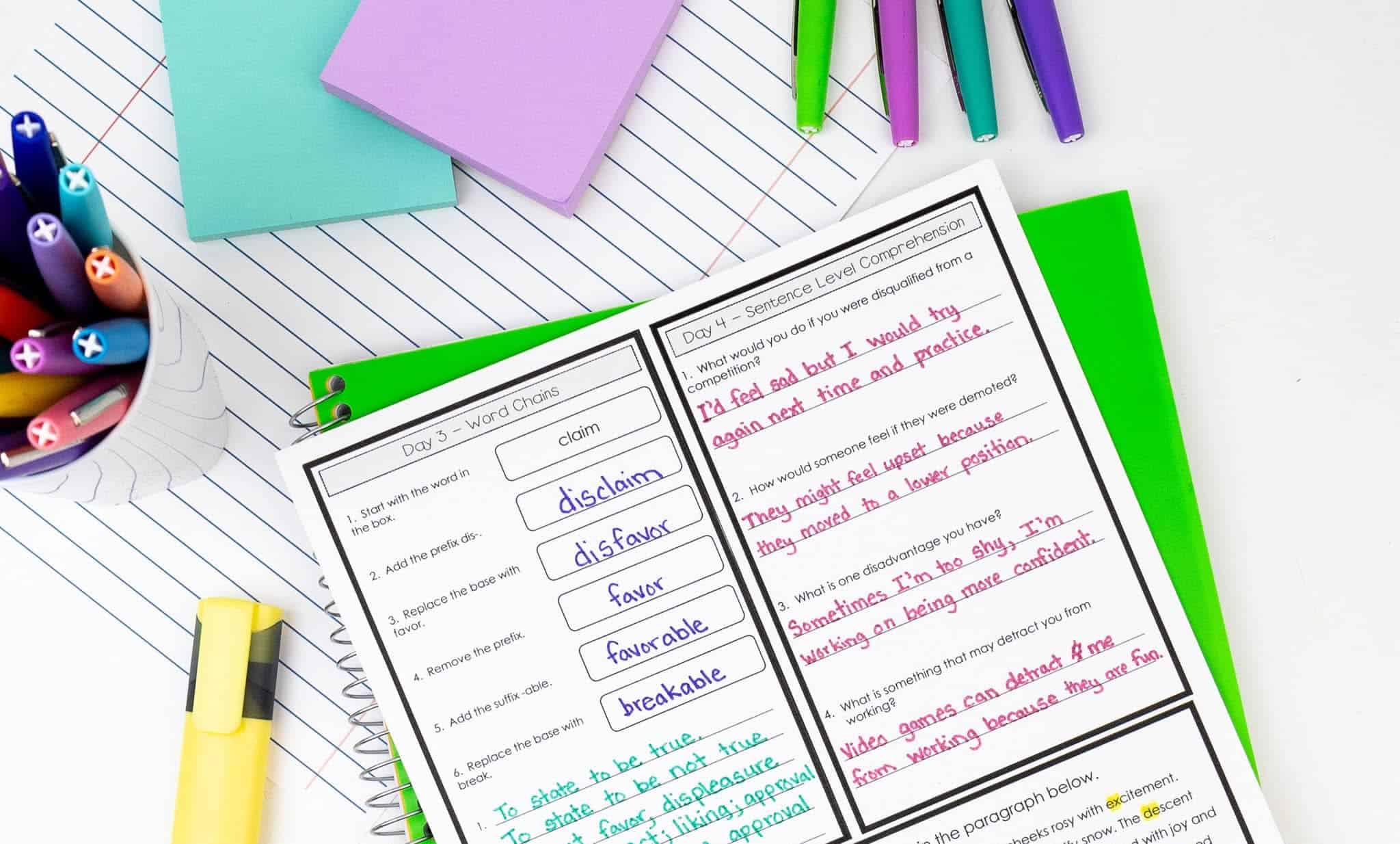
Teaching Suffixes Day 5-Paragraph Comprehension
Students read a brief paragraph and identify the prefixes or suffixes in each paragraph. Then, they select three of the words they highlighted and write the meaning of that word. If you prefer, you may have students only highlight five or six words per paragraph and omit inflectional endings.
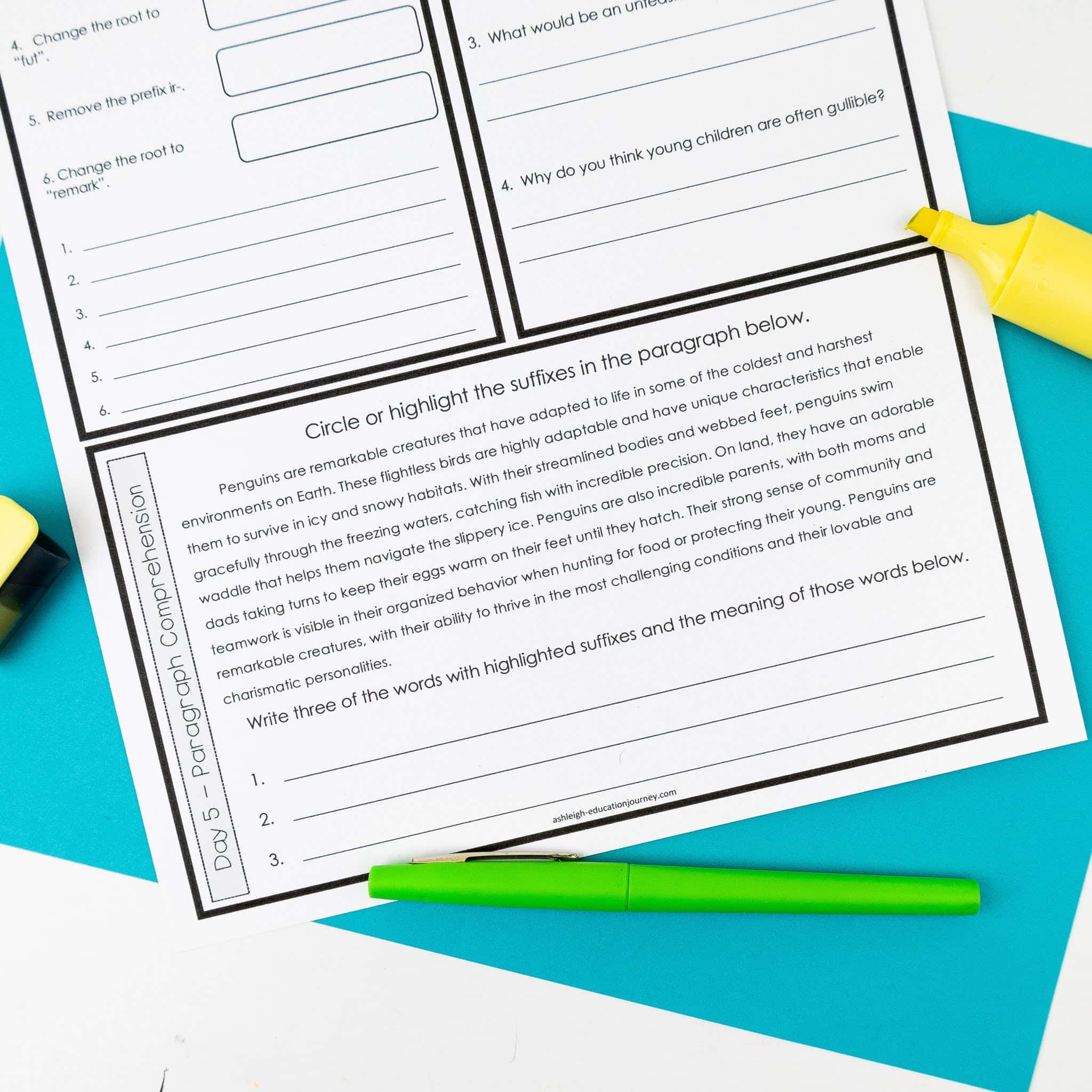
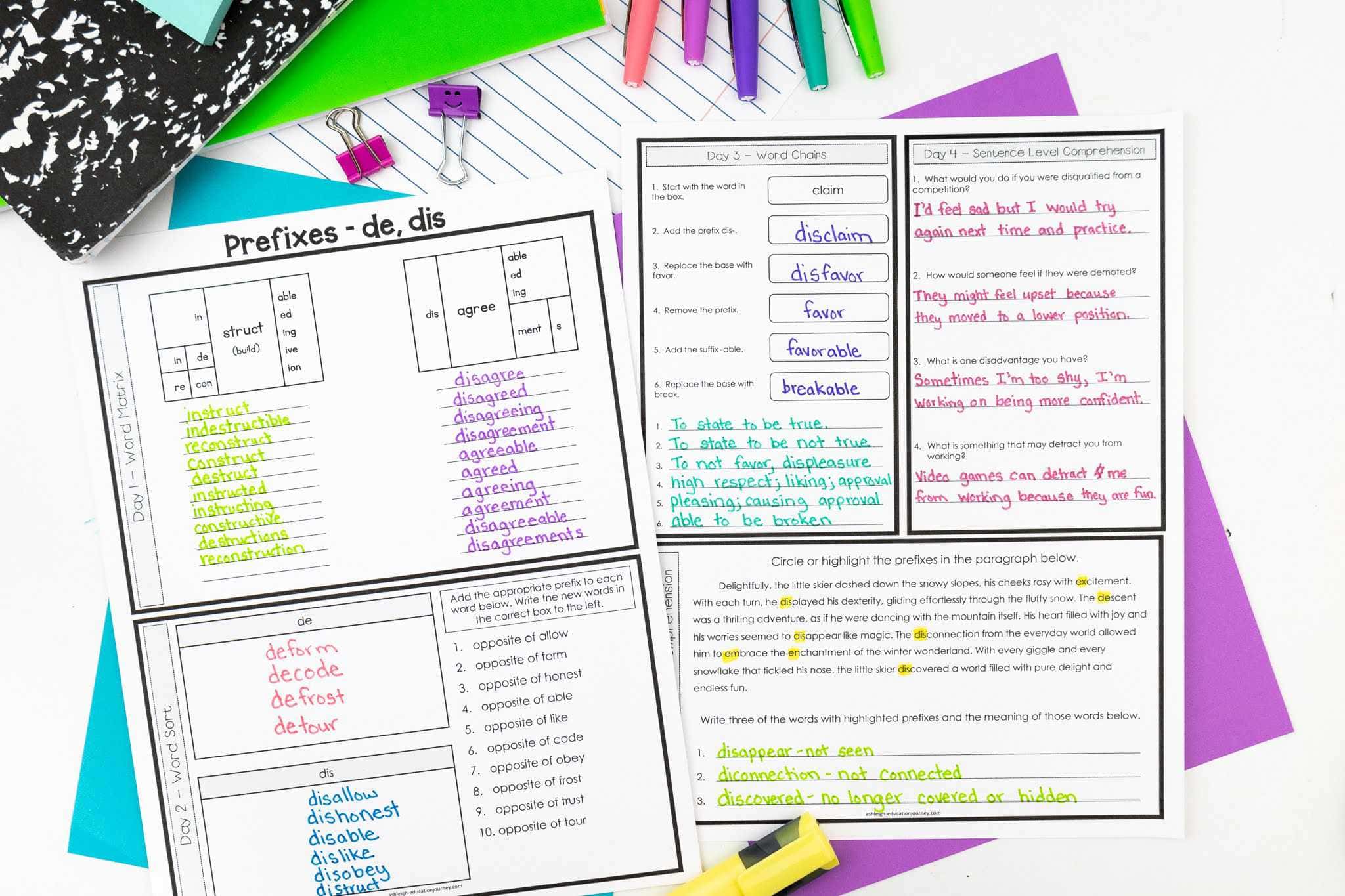
Multiple Meaning Words
In the past, I didn’t spend much, if any, time focusing on multiple meaning words. I assumed that was instinctive. How could anyone possibly confuse the bark on a tree with the bark of a dog, right??? Well, my students’ MAPS scores indicated otherwise.
After diving into MAPS data, I saw that there was a need for teaching multiple meaning words. While there is not as much time and attention given to multiple meaning words, I did want to provide consistent instruction. Plus, this has helped build my students’ vocabulary.
Day 1-Dictionaries
Students are given two dictionary entries of words with multiple meanings. For each entry, students are given three sentences and must select which meaning of the word is used for each sentence. This is also a great time to review reference skills.
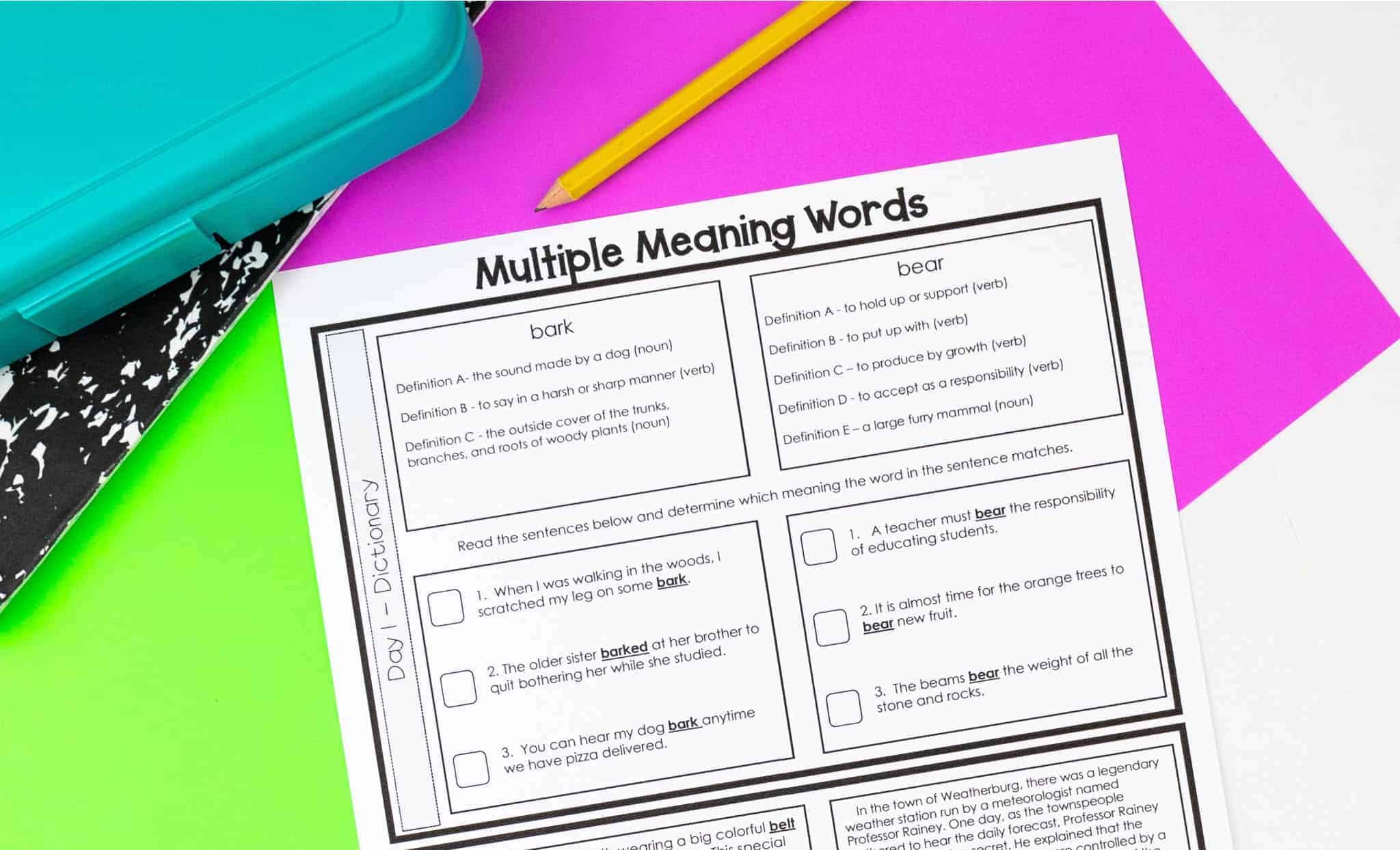
Day 2-Paragraph Comprehension
Students are given two paragraphs that each include a multiple meaning word. The definitions of the multiple are listed below each paragraph. After reading the paragraph, students determine which meaning of the word was used in the paragraph. This is a great time to review parts of speech.
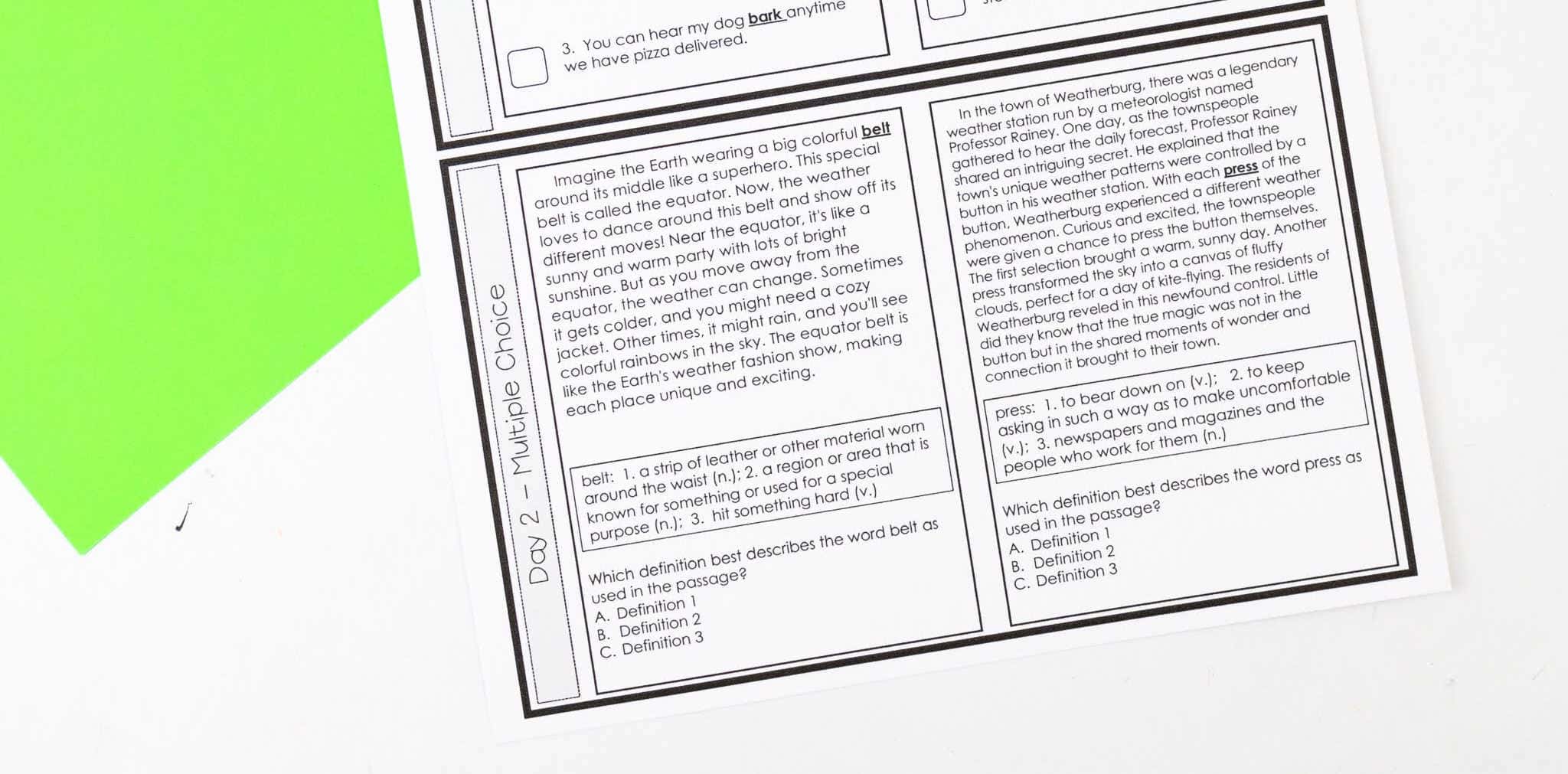
Teaching Multiple Meaning Words Day 3-Application
On Day 3, students write two sentences. In each sentence, students are given a multiple meaning word, and they write one sentence that uses the multiple meaning word two times to mean two different things. By the end of Day 3, students will have worked with six multiple meaning words. These are often commonly used words, so it’s feasible to cover a broader range of vocabulary.
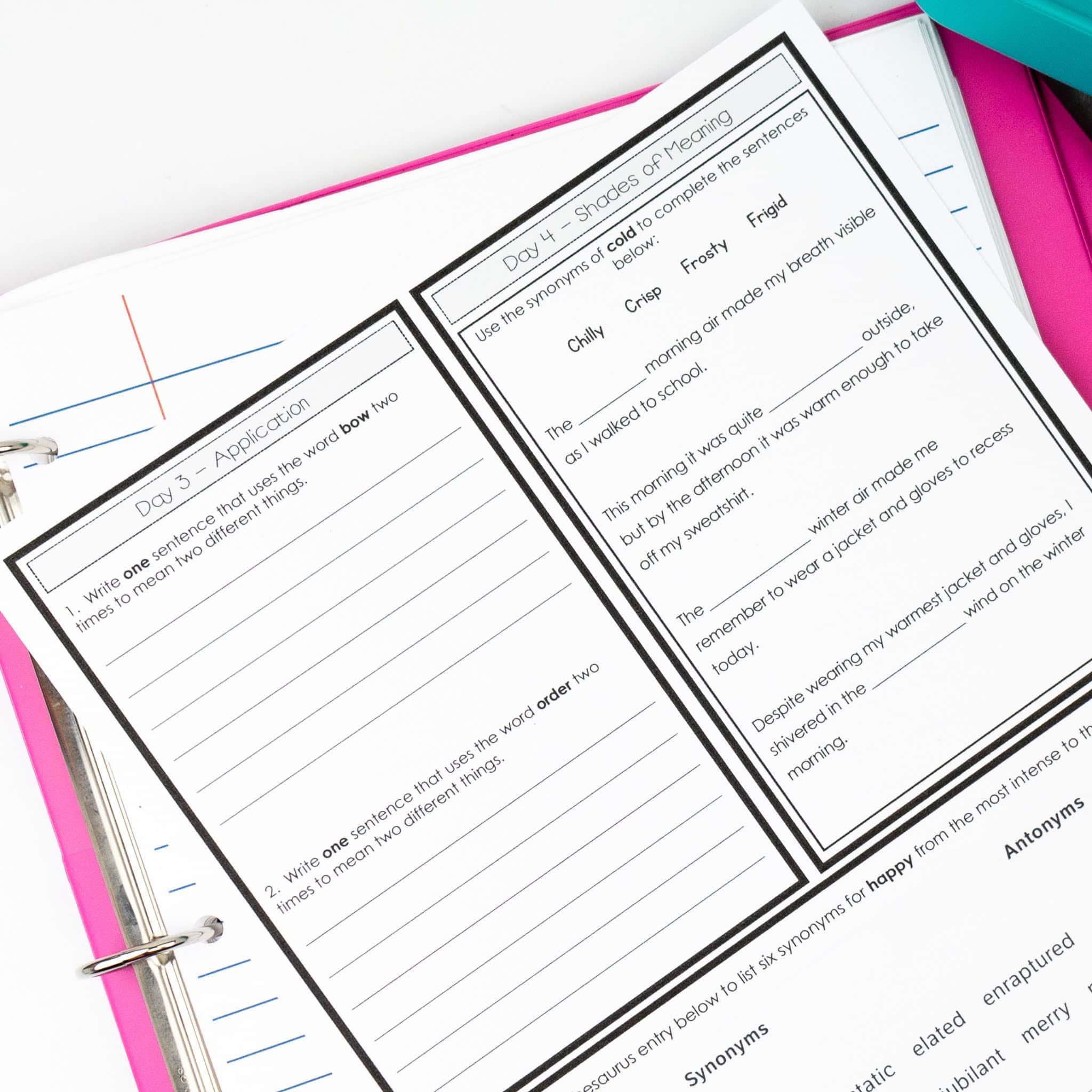
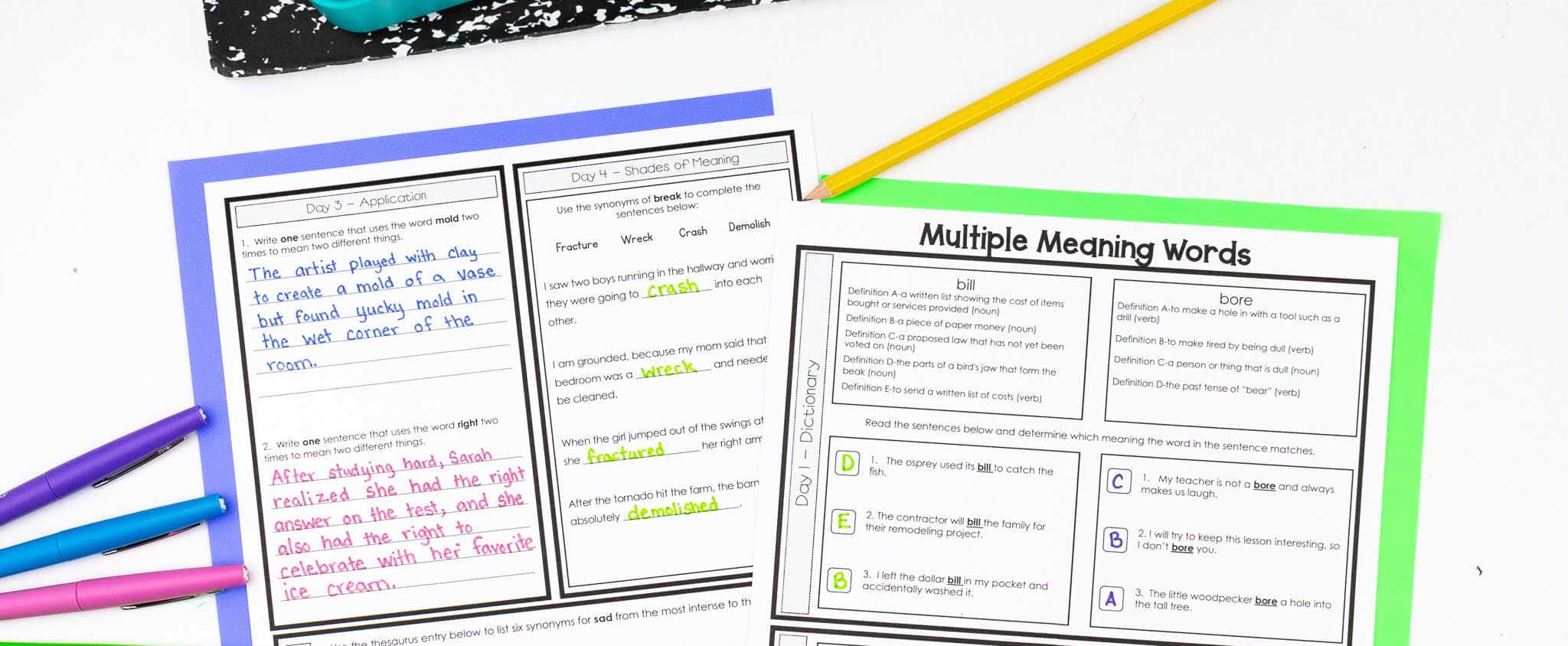
Shades of Meaning
I love teaching shades of meaning. It helps students with their word choice in writing and drastically improves their vocabulary. I’ve noticed that it can also transfer into reading comprehension, because students have a larger schema to better understand character development, setting, and even mood. It lets students dig deeper into comprehension.
Day 4-Word Choice
Students are given four synonyms of commonly used words such as “good” or “bad”. They use their understanding of shades of meaning to determine which word best completes each of the four sentences. Some of the included synonyms are quite similar, so there may be some disagreements among best answer choices. That’s okay! There is so much power in those conversations.
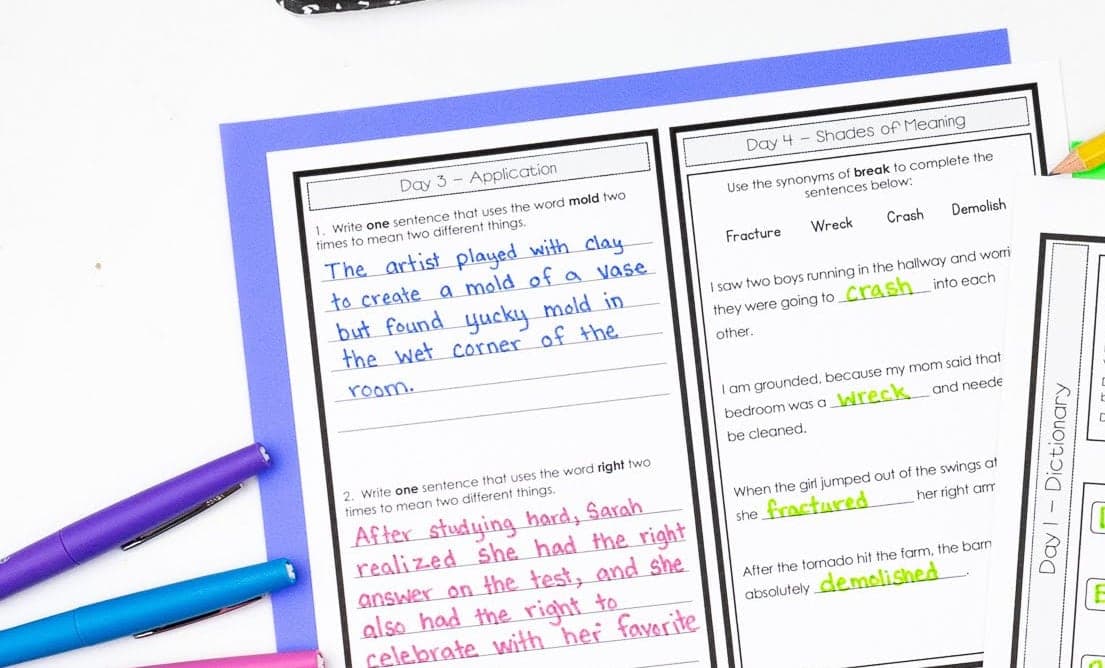
Day 5-Thesaurus & Shades of Meaning
My favorite activity is on the last day. Students are given a thesaurus entry with multiple synonyms of commonly used words. They use the thesaurus entry to list six synonyms for the word in order from most intense to least intense. Once again, while some responses may have clear right and wrong answers, others may have multiple correct options.
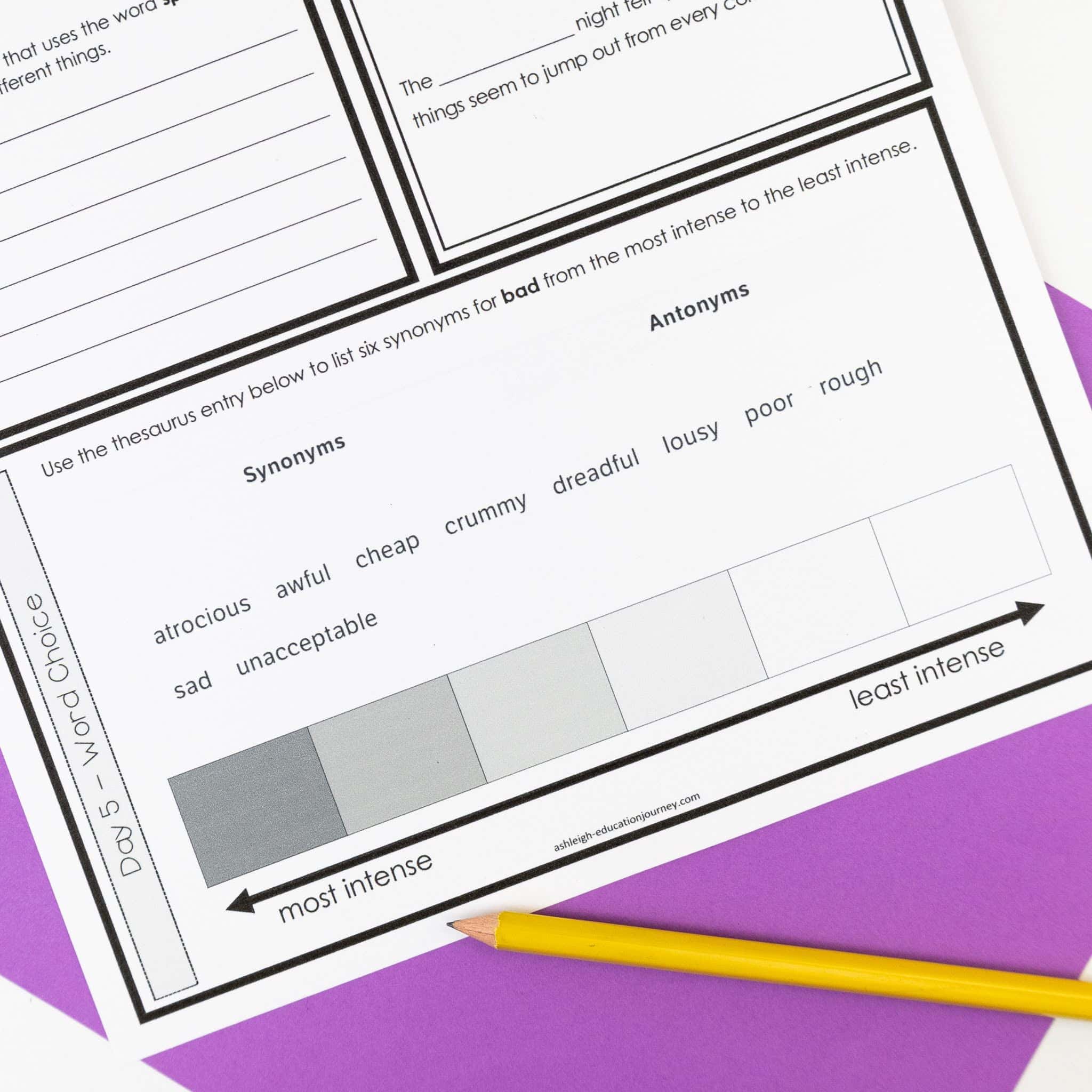
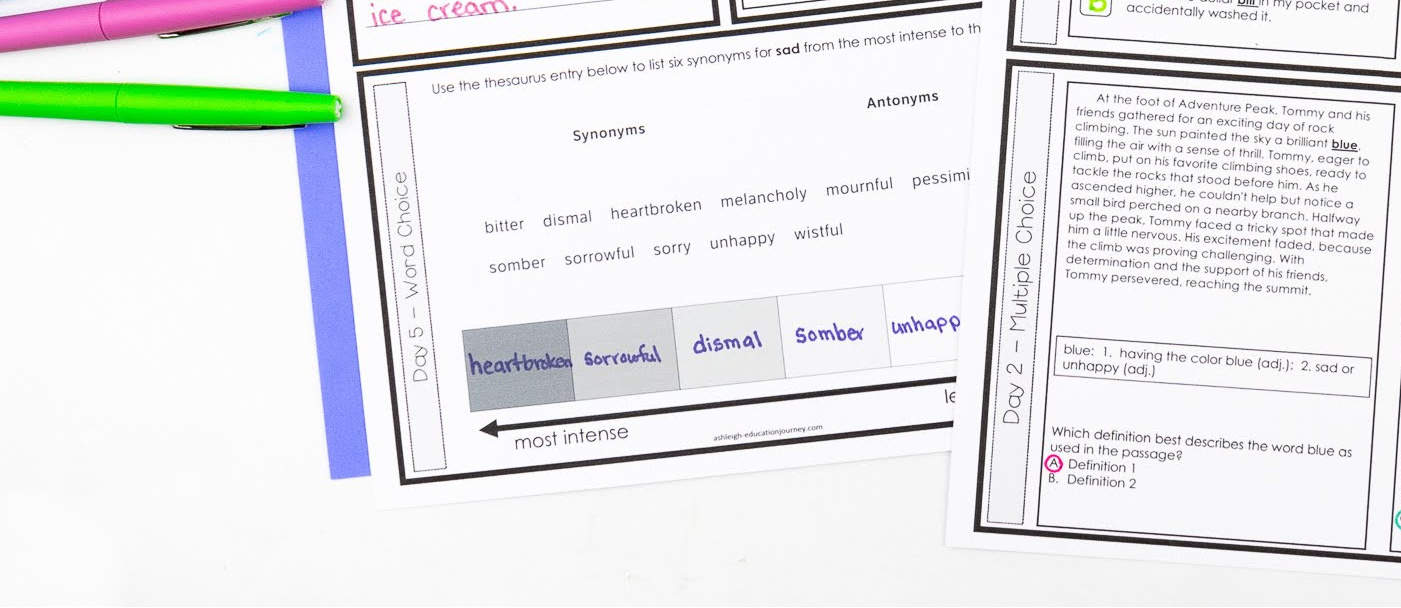
Teaching Prefixes, Suffixes, and Multiple Meaning Words – Organization
Since the typical school year is 180 days, which is 36 weeks, this resource includes 36 weeks of vocabulary instruction. The 36 weeks are broken into three sections: prefixes, suffixes, and multiple meaning words.
- This resource is organized in two different ways. The first section is organized by prefix, suffix, and multiple meaning words.
Pages 8-33 Prefixes
Pages 34-60 Suffixes
Pages 61-87 Multiple Meaning Words
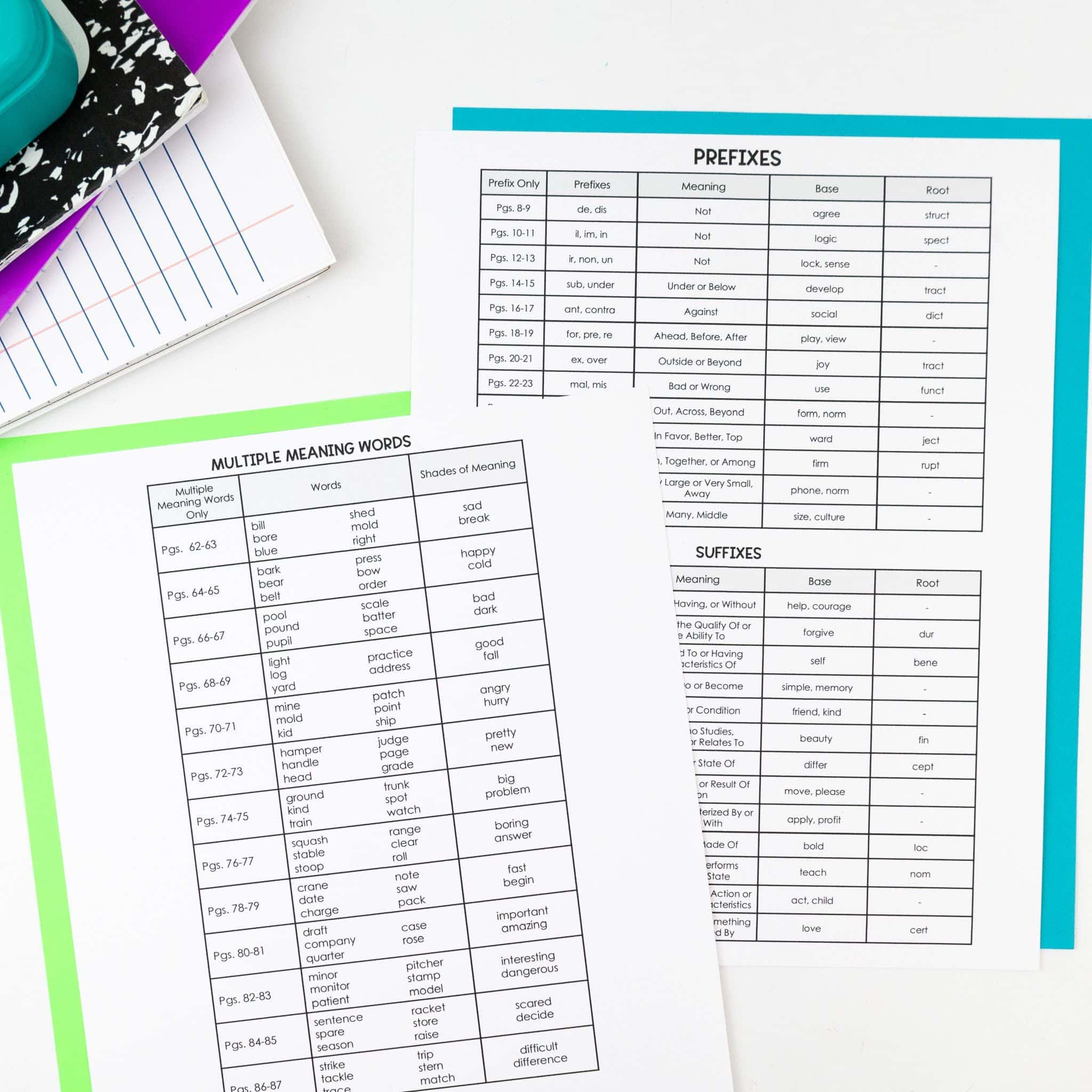
I like to alternate between prefixes, suffixes, and multiple meaning words, so I created a separate file that rotates between prefixes, suffixes, and multiple meaning words. This allows you to intermix the three sections when teaching prefixes, suffixes, and multiple meaning words. You can find this vocabulary resource here.
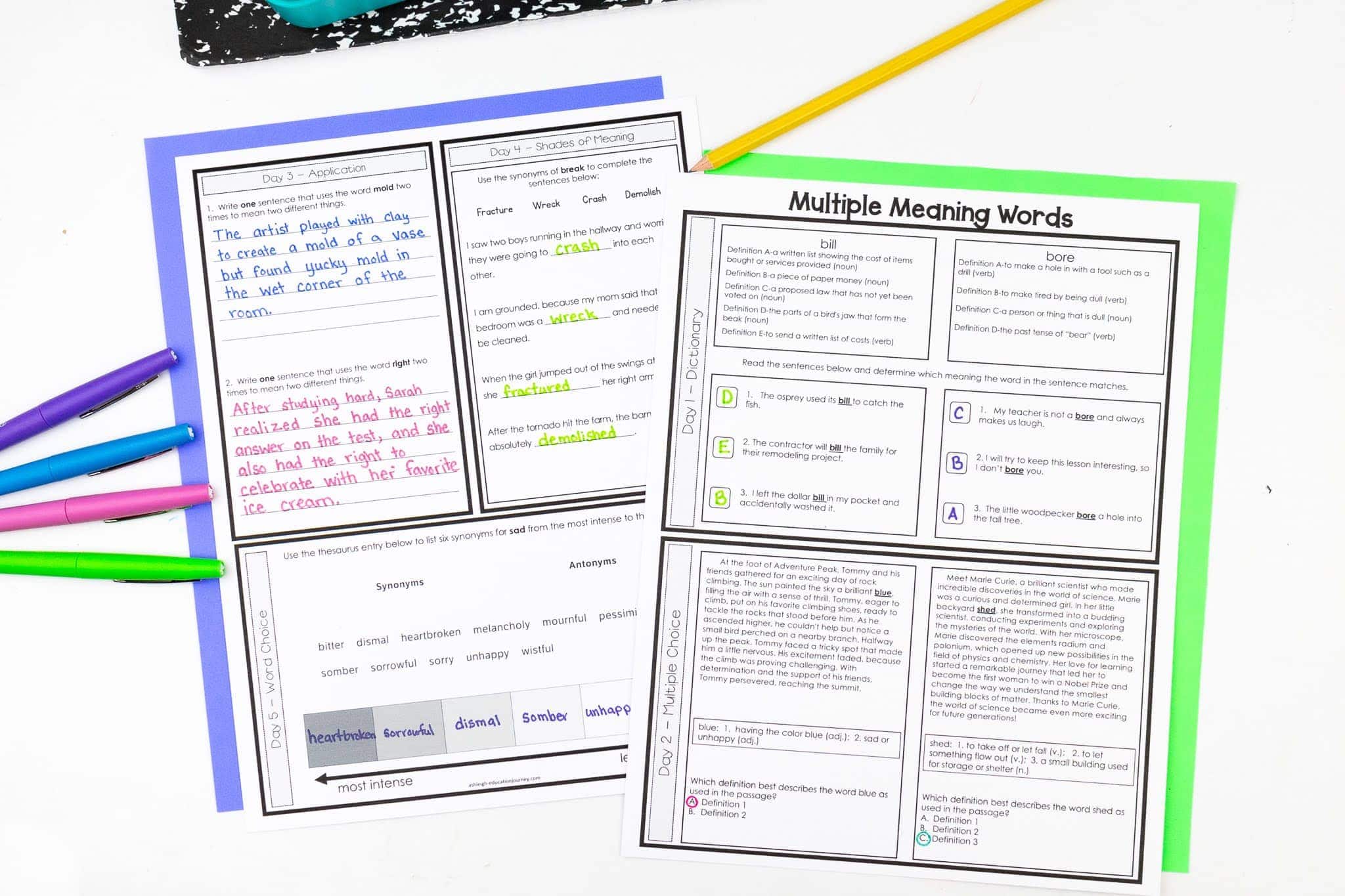
This is by far my favorite way to teach prefixes and suffixes! If you’re looking for more ideas, be sure to check out this post.



